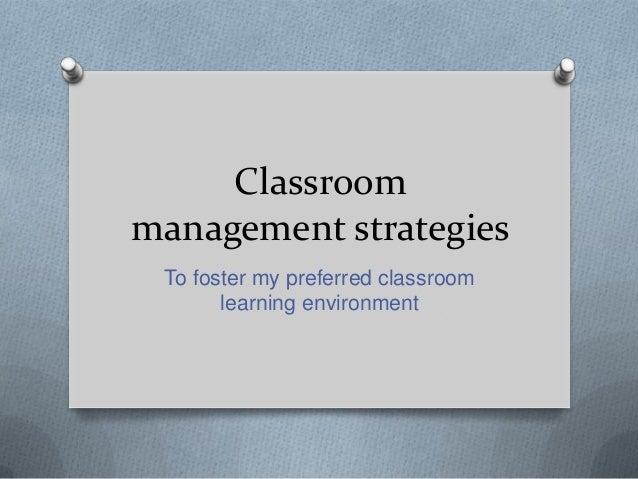
Creating a Learning EnvironmentĬreating and implementing a learning environment means careful planning for the start of the school year. These are all aspects of classroom management. Everything a teacher does has implications for classroom management, including creating the setting, decorating the room, arranging the chairs, speaking to children and handling their responses, putting routines in place (and then executing, modifying, and reinstituting them), developing rules, and communicating those rules to the students. Thus from the perspective of what students need to know in order to be successful, management and instruction cannot be separated.Īs a result of this broadened definition of classroom management, research has moved away from a focus on controlling behavior and looks instead at teacher actions to create, implement, and maintain a learning environment within the classroom. The teacher must facilitate the learning of these academic and social tasks. This means that students must simultaneously work at understanding the content and finding appropriate and effective ways to participate in order to demonstrate that understanding. Students have at least two cognitive demands on them at all times: academic task demands (understanding and working with content) and social task demands (interacting with others concerning that content). The interwoven nature of classroom management and classroom instruction is especially easy to see from a student perspective.

This correlation between instructional activity and management complexity further reinforces the interrelated nature of classroom management and curriculum. Furthermore, more intellectually demanding academic work and activities in which students create products or encounter novel problems require complex management decisions.


Content will be approached and understood differently in each of these settings. A classroom in which the teacher takes complete responsibility for guiding students' actions constitutes a different learning environment than one in which students are encouraged and taught to assume responsibility for their own behaviors. It also circumscribes the kinds of instruction that will take place in a particular classroom. A teacher's classroom-management system communicates information about the teacher's beliefs on content and the learning process.


 0 kommentar(er)
0 kommentar(er)
